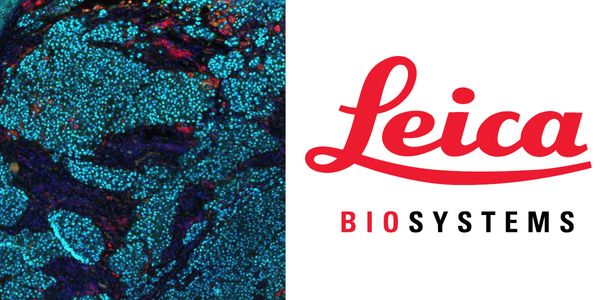Cancer Diagnostics
Cancer diagnostics often begin with a biopsy and histopathologic examination, from the basis of physical examination and medical history. Sometimes the first indication is an abnormal laboratory test result (eg, anemia resulting from colon cancer).
-
FEB 26, 2019 | 11:00 AMDATE: February 26, 2019TIME: 11:00am PST, 2:00pm EST Osteosarcoma is the most common type of primary bone cancer affecting adolescents and children attributed to...Speaker: Luke Tattersall, BSc Biomedical Sciences, PhD CandidateSponsored By: Thermo Fisher Scientific/GibcoFEB 26, 2019 | 9:00 AMDATE: February 26, 2019TIME: 9:00am PST, 12:00pm EST In an era of increasingly high-throughput, large-scale biology, with companies, government and non-prof...Speaker: Andrew Brooks, Ph.D. , Shawn Levy, Ph.D. , Brad Hamilton , Fay Betsou, Ph.DSponsored By: Brooks Life SciencesJAN 29, 2019 | 9:00 AMDATE: January 29. 2019TIME: 09:00am PST, 12:00pm EST In healthy tissue, a reservoir of stem cells gives rise to non-stem cells while simul...DEC 10, 2018 | 10:00 PMDATE: December 11, 2018TIME: 06:00 PSTIt’s understood and accepted that animal disease models generally offer great value for pre-clinical research and efficient drug screeni...NOV 20, 2018 | 7:00 AMDATE: November 20, 2018TIME: 07:00 PSTSince its original development (2008) COLD-PCR has been used by several groups for increasing the sensitivity of mutation detection in di...In 2017, the Washington State Legislature passed HB 1427, which mandated that boards and commissions for five prescribing professions (dental, medical, nursing, osteopathic, and podiatric) en...Speaker: Blake Maresh, MPA, CMBE
Drug overdose surpassed motor vehicle accidents as the leading cause of accidental death 2006 and has remained the leading cause of accidental death at the state and national level. Mos...
QIAGEN helps your team focus on the opportunities, not the obstacles, with an end-to-end clinical testing solution. During this talk, we will present a lung cancer case study to show how QIAG...
Speaker:
Raed Samara, PhD
, Dan Richards, PhD
The main problem for insufficient cervical cancer screening globally (less than 20% women at risk) is outreach failure. Enabling POCs with modern IT/mobile technology and connecting them with...
Speaker:
Olivera Markovic, MD, PhD
Cervical cancer is the 4th most common cancer worldwide with 528,000 new cases and 266,000 deaths every year. It is also the only cancer 100% preventable. It has been extensively proved, that...
Speaker:
Chris Meijer, MD, PhD
NOV 15, 2018 | 10:00 AM
DATE: November 15, 2018TIME: 10:00am PT, 1:00pm ET Multiplex fluorescence immunohistochemistry offers a window into the biology of human disease, enabling the ana...
Speaker:
Traci DeGeer, BS, HT (ASCP) HTL, QIHC
, Alexander Klimowicz
Sponsored By: Leica Biosystems
Clinical testing with next generation sequencing requires a complex bioinformatics pipeline to process raw DNA sequence into interpretable variants for medical reporting. With sequencin...
Point-of-care testing (POCT) allows for prompt clinical interventions by returning fast and reliable results near patients. This important role in patient management has led to the widespread...
Speaker:
Brenda Suh-Lailam, PhD
This presentation will review the scope and history of the chronic pain and opioid epidemic in the US. It will then discuss how chronic pain and opioid use is being dealt with in commun...
Speaker:
Carissa van den Berk-Clark, PhD
























